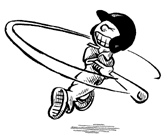
|
Physics and Acoustics of Baseball & Softball Bats
Daniel A. Russell, Ph.D. Graduate Program in Acoustics The Pennsylvania State University The contents of this page are ©2003-2011 Daniel A. Russell | 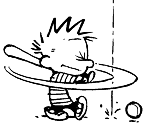
|

|
Physics and Acoustics of Baseball & Softball Bats
Daniel A. Russell, Ph.D. Graduate Program in Acoustics The Pennsylvania State University The contents of this page are ©2003-2011 Daniel A. Russell | 
|

| For a more general discussion of the physics of cheating in baseball, read this recently published paper: A.M. Nathan, L.V. Smith, W.L. Faber, and D.A. Russell, "Corked bat, juiced balls, and humidors: The physics of cheating in baseball," Am. J. Phys., (79) 6, 575-580 (2011). |
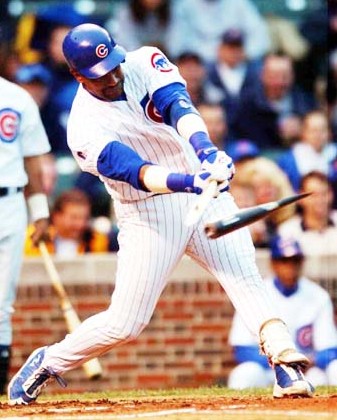 On June 3, 2003, Chicago Cubs centerfielder Sammy Sosa was ejected from a game in the first inning for using a corked bat. His bat shattered upon impact with the ball and the umpire who picked it up discovered the bat had been hollowed out and filled with cork. Sammy said it was an accident - that he had used the bat during batting practice and accidentally grabbed it by mistake when he went to the plate. Regardless of how the bat got there, it was not the first time a player has been caught with a doctored bat, and it won't be the last. But is does raise the question "Why would a player use a corked bat?" Is there any advantage (backed up by science) to using a corked bat?
On June 3, 2003, Chicago Cubs centerfielder Sammy Sosa was ejected from a game in the first inning for using a corked bat. His bat shattered upon impact with the ball and the umpire who picked it up discovered the bat had been hollowed out and filled with cork. Sammy said it was an accident - that he had used the bat during batting practice and accidentally grabbed it by mistake when he went to the plate. Regardless of how the bat got there, it was not the first time a player has been caught with a doctored bat, and it won't be the last. But is does raise the question "Why would a player use a corked bat?" Is there any advantage (backed up by science) to using a corked bat?
How do you Cork a Bat?Corking a bat the traditional way is a relatively easy thing to do.[2] You just drill a hole in the end of the bat, about 1-inch in diameter, and about 10-inches deep. You fill the hole with cork, superballs, or styrofoam - if you leave the hole empty the bat sounds quite different, enough to give you away. Then you glue a wooden plug, like a 1-inch dowel, in to the end. Finally you sand the end to cover the evidence. Some soures suggest smearing a bit of glue on the end of the bat and sprinkling sawdust over it so help camouflage the work you have done.Sammy's corked bat was different. What makes Sammy Sosa's corked bat interesting is that it was not corked in the usual way, by drilling a hole in the end of the barrel. The cork-filled hole in Sammy's bat was in the taper region at the middle of the bat. This would have a different effect than has been described above. Instead of lowering the moment of inertia by removing mass from the end of the bat, Sosa's corked bat would probably have had a very similar moment of inertia (perhaps even a little higher) than an uncorked bat of exactly the same dimensions. If the taper region was weakened then the bat might be more likely to flex during the swing, a feature which is currently being designed into some of the newest aluminum and composite baseball and softball bats. If the bat flexes during the swing, and if a player can time the swing just right, then the tip of the bat is moving faster than a rigid bat would be when it meets the ball. For a wood bat, the bat speed just prior to the collision is the single most important factor in how fast the ball comes off the bat. So, it is conceivable that Sosa's specially corked bat could give him a slight advantage for hitting the ball faster and farther. Sammy consistently claimed that he used this corked bat occasionally in batting practice to put on a homerun show for the fans. However, as he found out to his embarrassment, using such a bat in a game situation is not a good idea. In batting practice the hitter is hitting balls which are pitched so that he can hit them, in order to help him warm up his swing mechanics. In a game when the opposing pitcher is purposefully trying to jam the batter with a pitch to the inside, a bat which has been weakened at the taper/handle region will break very easily. |
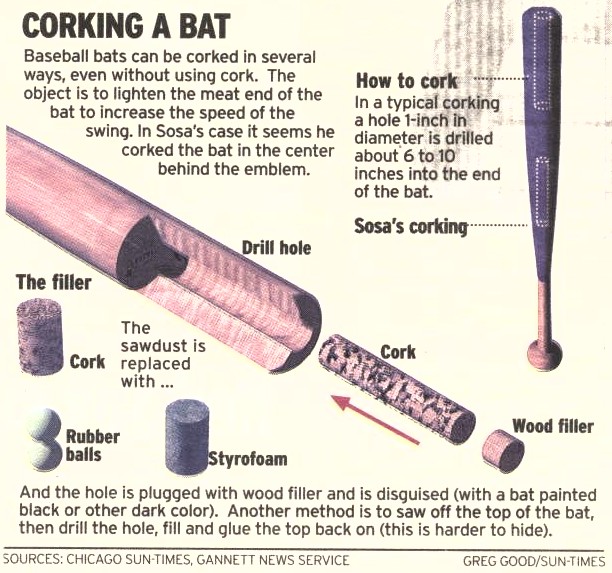
|
| Bat | BBCOR |
|---|---|
| normal | 0.445±.005 |
| corked | 0.444±.005 |
An unpublished experiment carried out by Alan Nathan[4] using the same equipment at the UMass-Lowell Baseball Research Center found a very different result. This experiment took two identical wood bats (same length, mass, MOI, etc.) and drilled a 7/8" diameter 9-1/4" deep hole in one of them. He measured the bat-ball coefficient-of-restitution (BBCOR, defined below) of the bat-ball collision and found that the results were identical for the normal and corked bats. Using this information and data on how the swing speed depends on the bat's inertia properties from the Crisco-Greenwald batting cage study[5] Dr. Nathan predicted that the final batted ball speed would actually be lower for the corked bat than it would be for the normal bat.
|
In July of 2003, I had the opportunity, with Alan Nathan (Univ. of Illinois) and Lloyd Smith (Washington State Univ.), to measure the Bat-Ball Coefficient-of-Restitution (BBCOR) of several corked and normal wood bats. We obtained three professional grade wood bats (33") from Rawlings and measured the BBCOR for all three. We drilled a 1" diameter, 10" deep hole in the end of two of them, and measured the BBCOR of the drilled (but empty) bats. Finally we filled the bats with cork and remeasured the BBCOR. The Bat-Ball Coefficient-of-Restitution (BBCOR) depends primarily on the elastic properties of the ball and bat, with a slight dependence on the moment of inertia of the bat. If a hollowed-out, corked wood bat has a trampoline effect, then it would show up as an increase in the BBCOR. In our experiment, the BBCOR was measured by firing a ball (upwards of 110 mph) from a cannon towards a stationary bat and measuring the speed of the ball before and after it hit the bat.[6] The bat was gripped at the handle by a clamp device which was free to rotate about a pivot, though the bat was initially at rest. For those concerned that clamping the bat in a pivot is not the same as a player holding or swinging the bat, Keith Keonig (Univ. Mississippi) has convincingly shown that batted ball speed is completely independent of the method by which the ball is gripped at the handle.[7]
After the collision the ball rebounded backwards and the bat rotated about its pivot. The ratio of ball speeeds (outgoing / incoming) is termed the collision efficiency, eA. A kinematic factor k, which is essencially the effective mass of the bat, is defined as where Ibat is the moment-of-inertia of the bat as measured about the pivot point on the handle, and z is the distance from the pivot point where the ball hits the bat. Once the kinematic factor k has been determined and the collision efficiency eA has been measured, the BBCOR is calculated from The data at right[8] shows a typical result for one of the bats. The plot indicates that the BBCOR is lowest for the drilled (hollow) bat. The BBCOR value for the corked bat is slightly lower than the original bat, though given the error in the measurements the results are basically indistinguishable. This result confirms the previous experiment by Alan Nathan[4] that a corked bat does not have a trampoline effect.
|
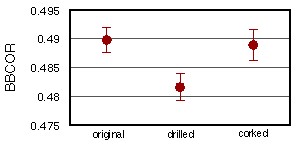
Fig. 2. BBCOR values measured for a normal wood bat and for the same bat after being drilled and corked. |
|
Perhaps it would be even better to compare Batted-Ball Speed (BBS). Batted-Ball Speed may be predicted[9] from
where vball is the incoming ball speed, vbat is the bat swing speed just before collision and eA is the collision efficiency (ratio of ball rebound speed to incoming speed). The bat swing speed depends on the moment-of-inertia of the bat.[10] Using the measurements of eA along with the bat kinematic factor k and knowledge of how swing speed is related to bat moment-of-inertia we obtained the BBS values shown in Fig. 3 at the right. This result suggests that corked bat would produce batted-ball speeds about 1 mph lower than a normal wood bat. |
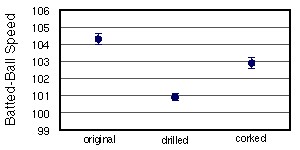
Fig. 3. Batted-Ball Speeds predicted for a normal wood bat and for the same bat after being drilled and corked. |
| One of my meager contributions to the understanding of how a baseball bat works is a correlation between the frequency of vibrations in the barrel of a hollow aluminum or composite bat and its measured performance.[11] A lower frequency of the fundamental hoop mode of the barrel means a softer spring constant of the bat, and a greater trampoline effect resulting in higher batted ball speed. A simple mass-spring model of the trampoline effect yields a very interesting result, indicated by the solid black curve in the figure at right. As the frequency of the hoop mode decreases, the performance of the bat increases until an optimal frequency is reached. Below this optimum frequency the performance quickly falls off. The success of this simple model is evidenced by the general characteristics of baseball bats. The majority of aluminum bats currently on the market have hoop frequencies in the neighborhood of 2000 Hz. The highest performing bat I have seen so far has a hoop frequency of about 1600 Hz. A prototype all-composite baseball bat I had the chance to test in my lab was found to have a hoop frequency of about 1450 Hz. This bat was field tested by a top college baseball team and almost every player on the team was hitting balls in excess of 500 ft. In constrast, a 1989 graphite bat - which was marketed as having the strength of aluminum and the perfromance of wood - has a hoop frequency of 3350 Hz. It did not last long on the market because it was a very poor performing bat, nowhere near the performance of available metal bats. When I measured the hoop frequency of the corked wood bats used in our 2003 study I found the hoop frequency to be in excess of 5300 Hz, which essentially means that any enhancement in performance would be almost negligible. |
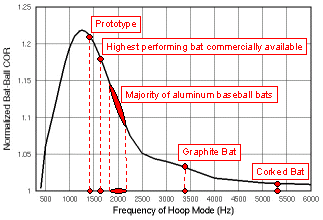
Fig. 4. Mass-spring model of the trampoline effect showing how hoop frequency predicts performance. |
References
[1] Robert K. Adair, The Physics of Baseball, 3rd Ed., (Harper Collins, 2002)
[2] ESPN Baseball Tonight, on June 3, 2003 aired a nice segment in which Buck Showalter showed how to cork a bat, drilling the hole, filling it with cork, and plugging the end.
[3] L.P. Fallon and J.A. Sherwood, "A Study of the Barrel Construction of Baseball Bats,” Procceings of the 4th International Conference on the Engineering of Sport, Kyoto, Japan. (2002)
[4] A. M. Nathan, "Some Remarks on Corked Bats" (June 10, 2003)
[5] R.M. Greenwald R.M., L.H. Penna , and J.J. Crisco,"Differences in Batted Ball Speed with Wood and Aluminum Baseball Bats: A Batting Cage Study," J. Appl. Biomech., 17, 241-252 (2001).
[6] As long as the relative speed between bat and ball is kept constant, a simple frame-of-reference arguement can be used to show that identical measurements will be obtained for (i) a moving ball hitting a stationary bat, (ii) a moving bat hitting a stationary ball, and (iii) a moving bat hitting a moving ball.
[7] K. Keonig, J.S. Dillard, D.K. Nance, D.B. Shafer,"The effects of support conditions on baseball bat performance testing," Engineering of Sport 5 Vol. 2, pp. 87-93 (International Sports Engineering Association, 2004). Proceedings of the 5th International Conference on the Engineering of Sport, UC Davis, September 11-15, 2004.
[8] A.M. Nathan, D.A. Russell, and L.V. Smith, "The Physics of the Trampoline Effect in Baseball and Softball Bats," Engineering of Sport 5 Vol. 2, pp. 38-44 (International Sports Engineering Association, 2004). Proceedings of the 5th International Conference on the Engineering of Sport, UC Davis, September 11-15, 2004.
[9] ASTM F2219-04 Standard Test methods for Measuring High Speed Bat Performance
[10] L. Smith, J. Broker, A. Nathan, “A Study of Softball Player Swing Speed,” Sports Dynamics Discovery and Application, Edited by A. Subic, P. Trivailo, and F. Alam, RMIT University, Melbourne Australia, pp. 12-17 (2003)
[11] D.A. Russell,"Hoop frequency as a predictor of performance for softball bats," Engineering of Sport 5 Vol. 2, pp. 641-647 (International Sports Engineering Association, 2004). Proceedings of the 5th International Conference on the Engineering of Sport, UC Davis, September 11-15, 2004.